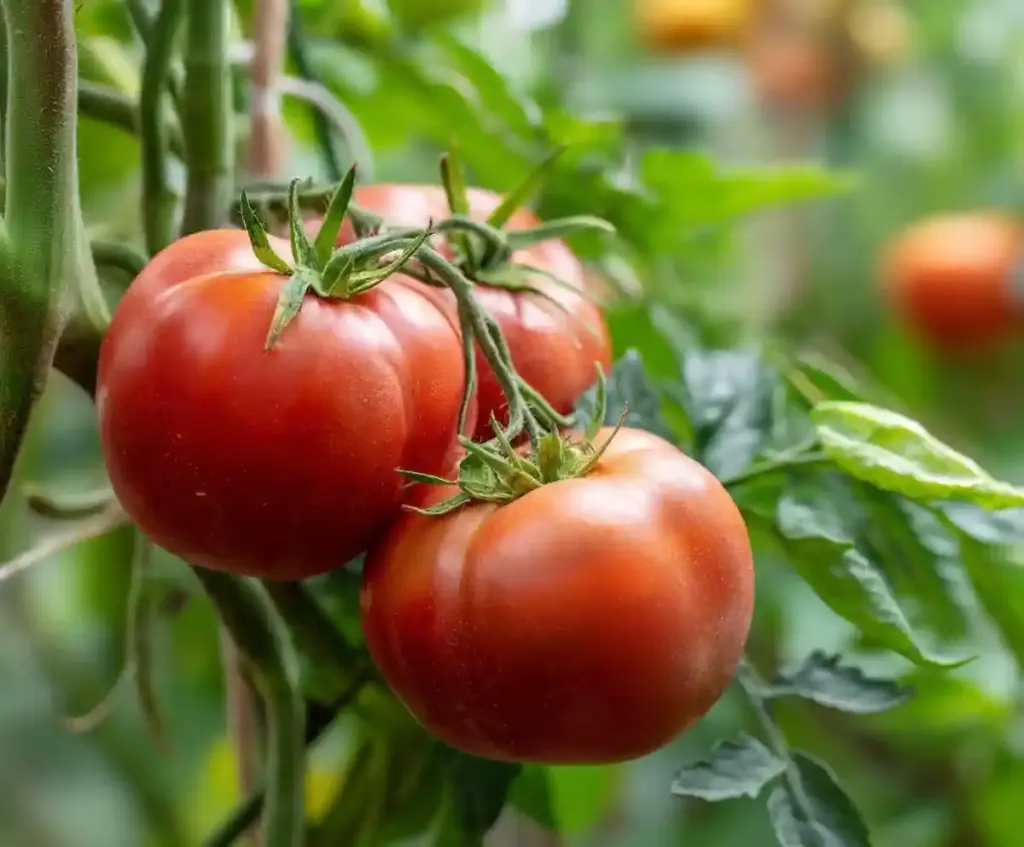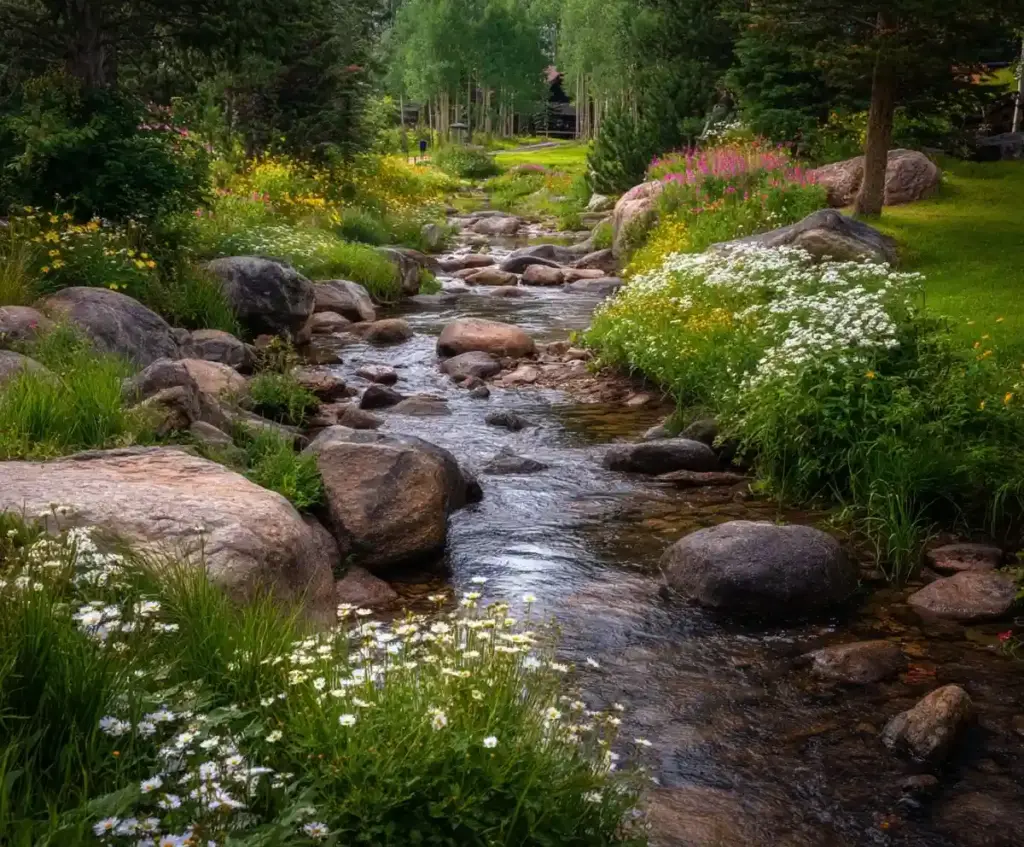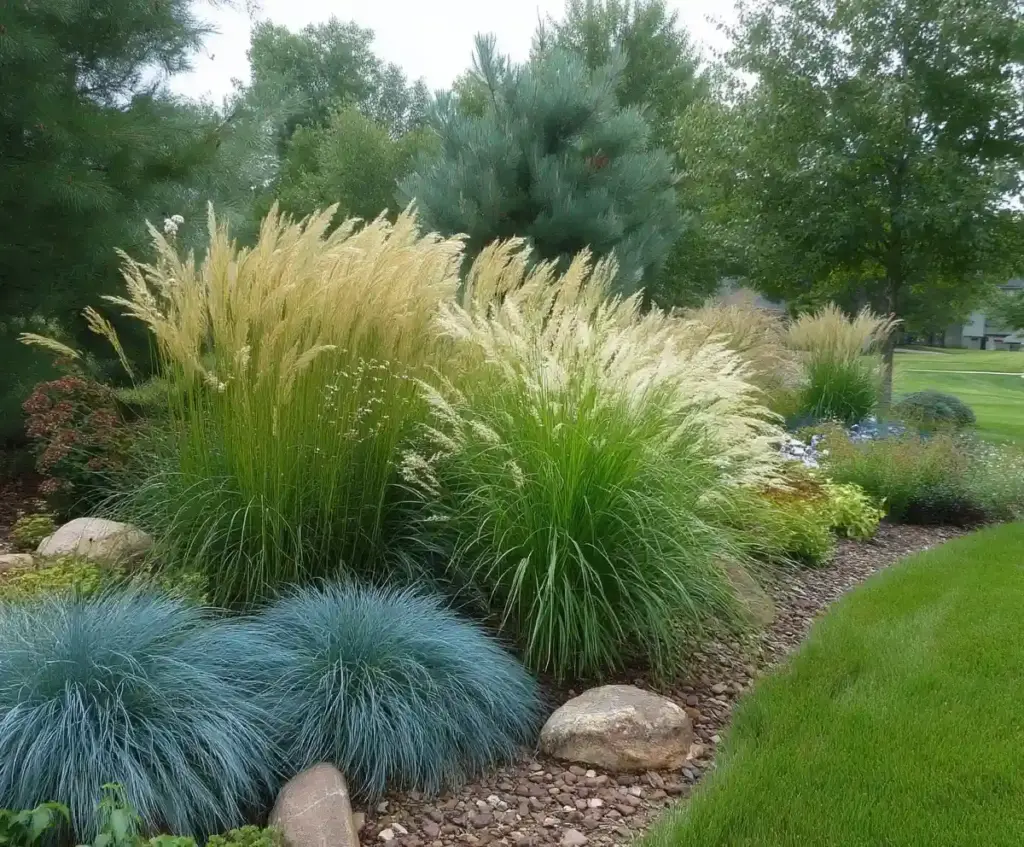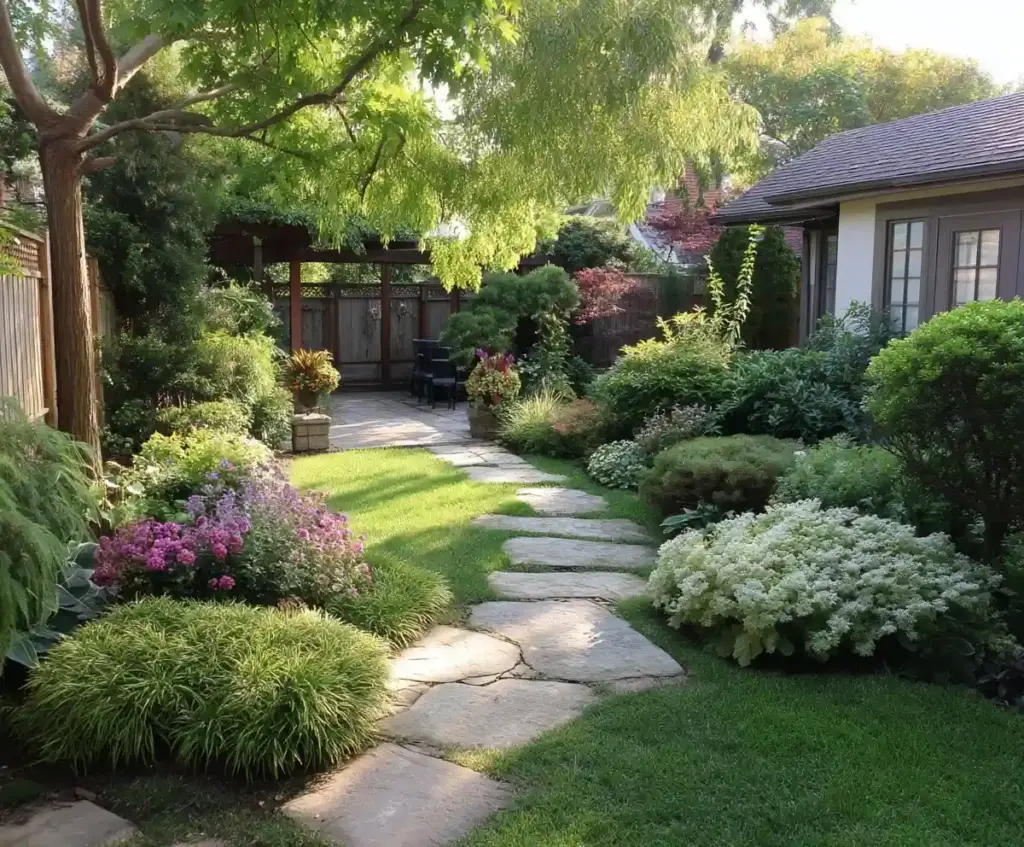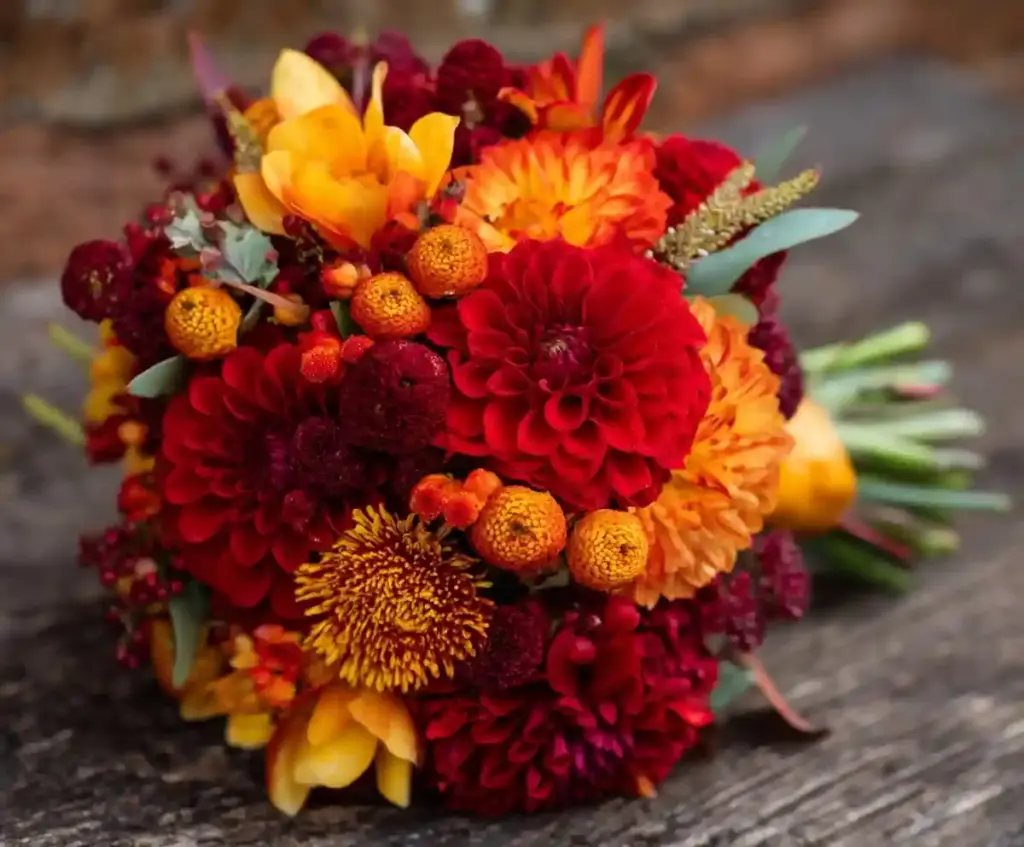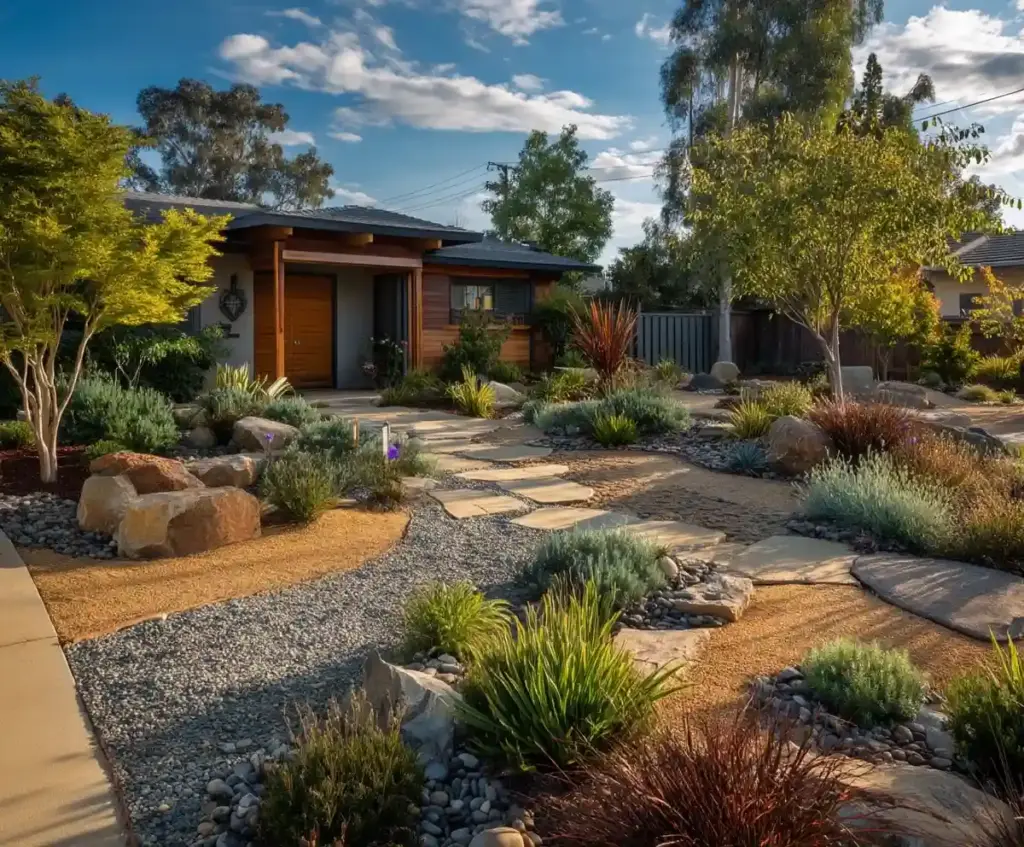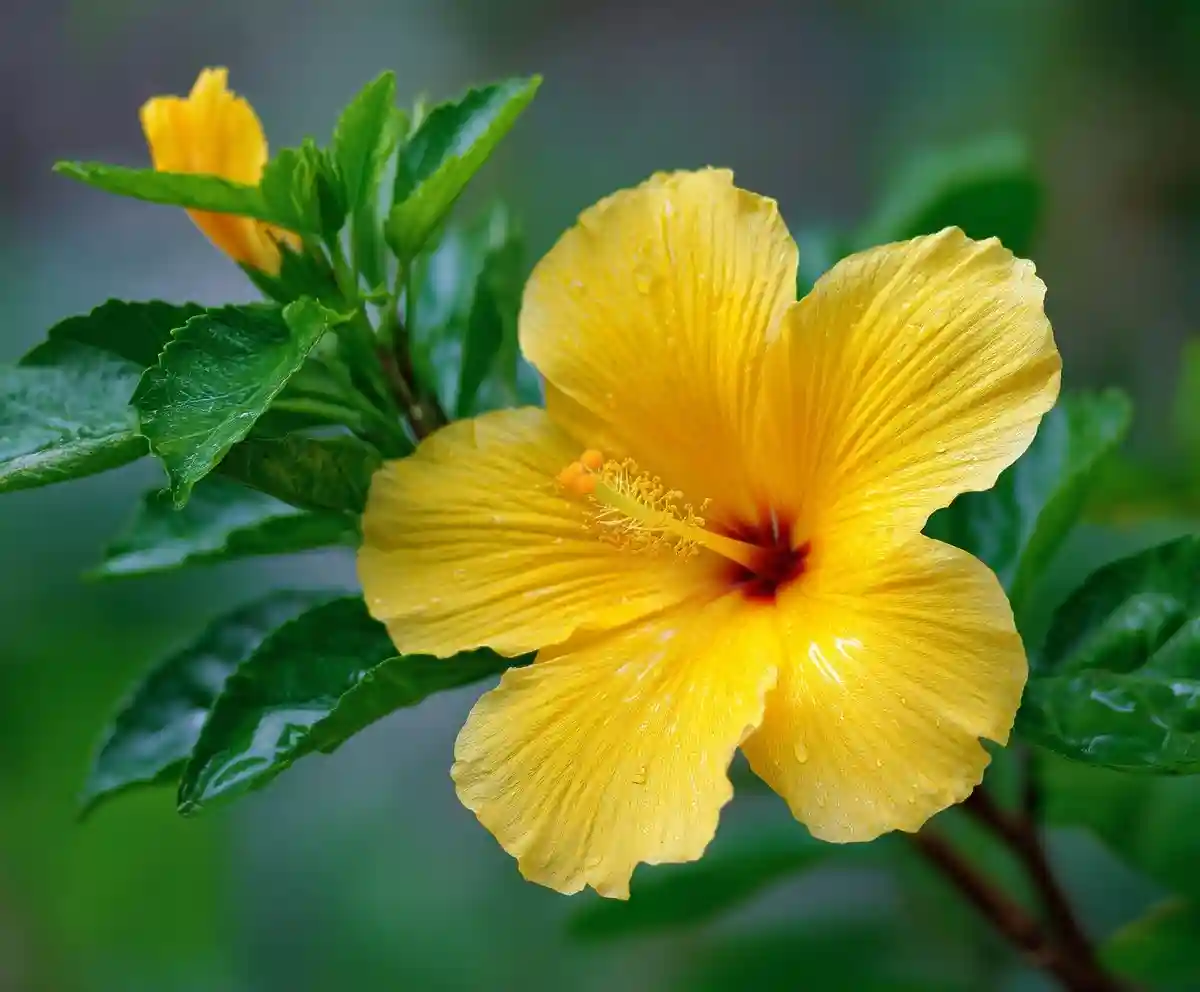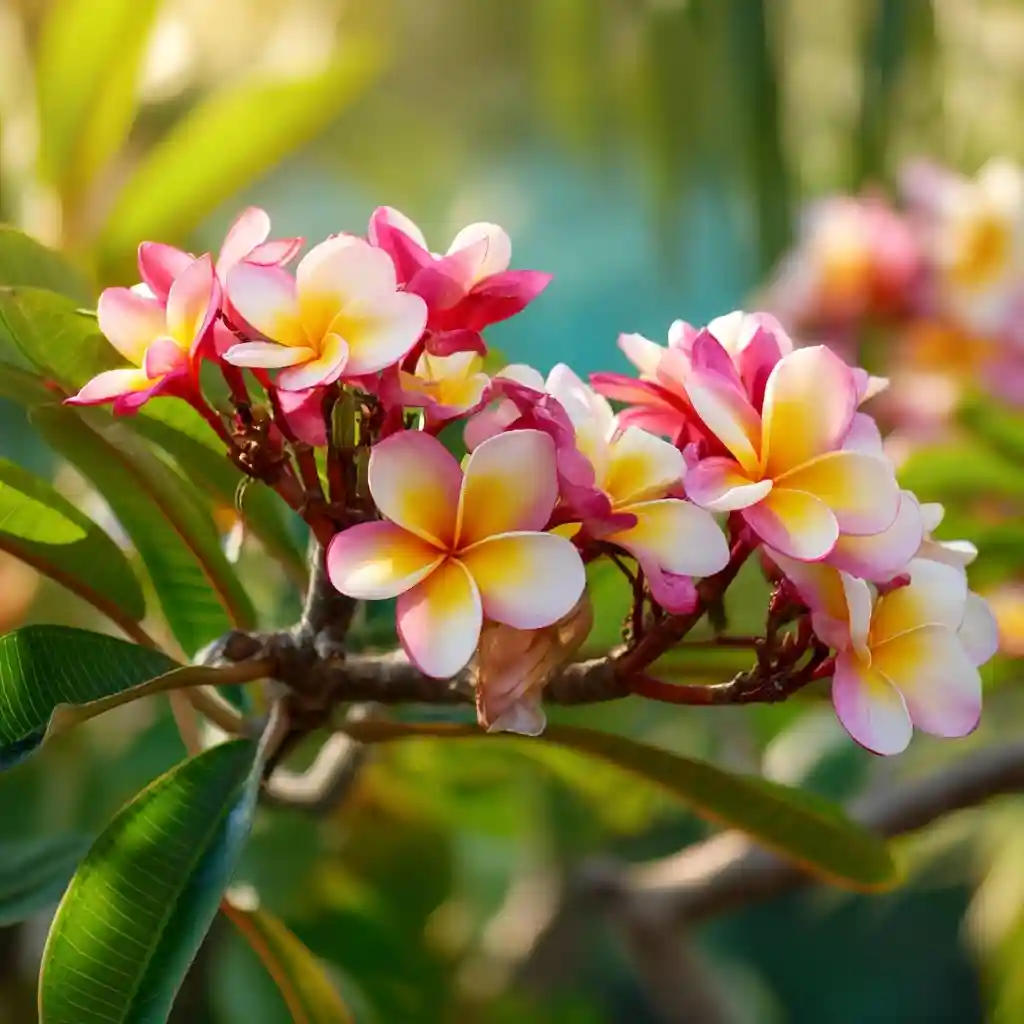Hawaiian tropical flowers are a stunning symbol of the islands’ natural beauty, filling gardens and landscapes with color, fragrance, and charm. From the iconic hibiscus to the exotic heliconia, these blossoms thrive in Hawaii’s warm, sunny climate and volcanic soil. Many of these flowers hold deep cultural significance, often used in leis, traditional ceremonies, and local celebrations. Whether you’re strolling through a botanical garden or relaxing at a resort, these blooms showcase the vibrant life of the islands.
Each flower has its own story, from legends of love to natural adaptations that make them unique to Hawaii. Let’s take a closer look at fifteen breathtaking flowers that capture the essence of the tropics.
Table of Contents
1. Plumeria Flower
The plumeria is one of the most recognizable Hawaiian tropical flowers, celebrated for its sweet fragrance and vibrant colors ranging from white and yellow to deep pink. Although originally native to the Caribbean and Central America, plumeria has become a beloved symbol of Hawaii, often seen adorning leis.
These blooms thrive in warm, sunny conditions and are commonly grown in home gardens, lining pathways with their soft petals. Beyond their beauty, plumeria flowers carry cultural meaning—women in Hawaii wear them behind the ear to signal relationship status: on the right for single, on the left for taken.
Gardeners love plumeria for its low-maintenance nature and ability to bloom almost year-round in the islands’ tropical climate.
2. Hawaiian Hibiscus Flower
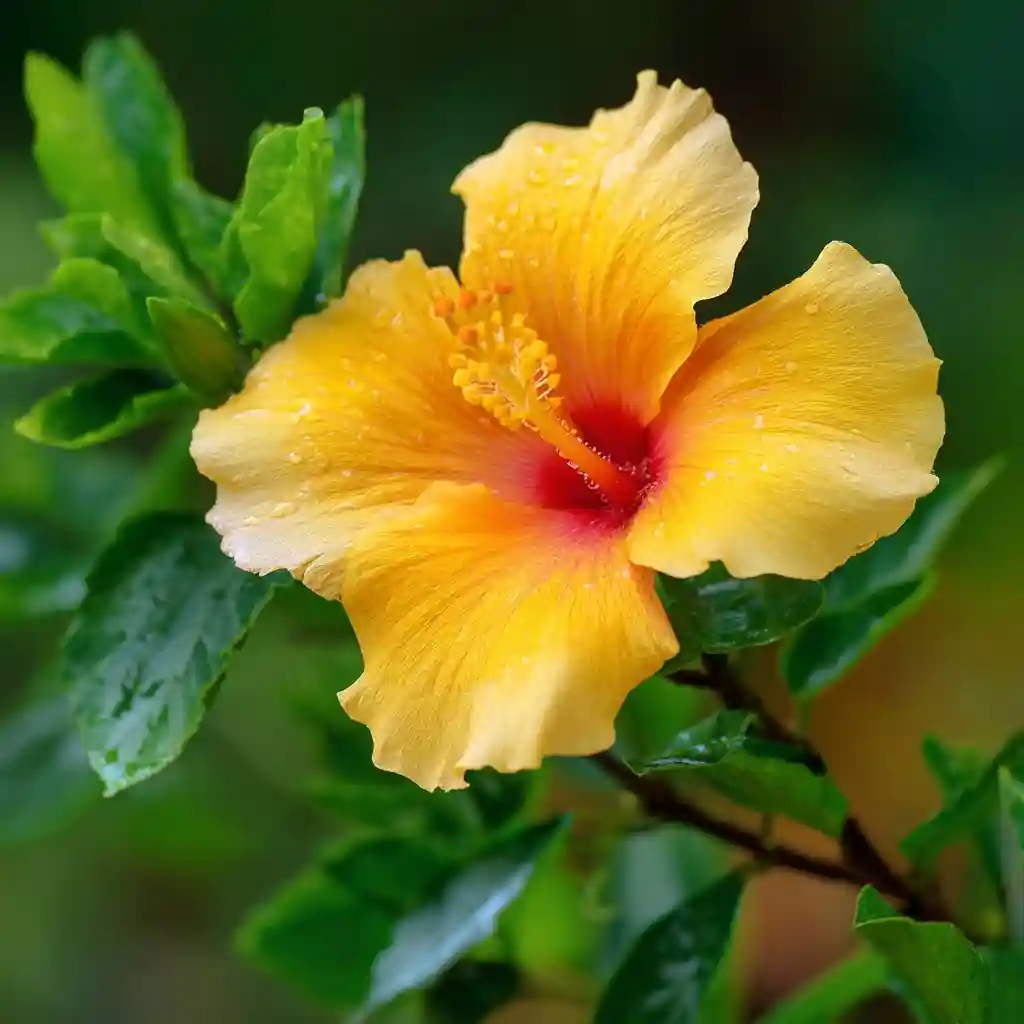
The Hawaiian hibiscus flower is the state flower of Hawaii and a true emblem of the islands’ tropical charm. Known locally as pua aloalo, this bloom comes in brilliant shades of yellow, red, pink, and orange, with its large petals and striking stamen instantly catching the eye.
Hibiscus flowers thrive in sunny spots with well-draining soil and regular watering. Their blooms attract butterflies and hummingbirds, adding life to any Hawaiian garden. Beyond its beauty, the hibiscus has cultural significance—it often represents delicate beauty and fleeting moments, as the blossoms typically last only a day.
For travelers, spotting hibiscus flowers along roadsides or in hotel gardens is a quintessential Hawaiian experience, making them a favorite backdrop for vacation photos.
3. Tropical Bird of Paradise
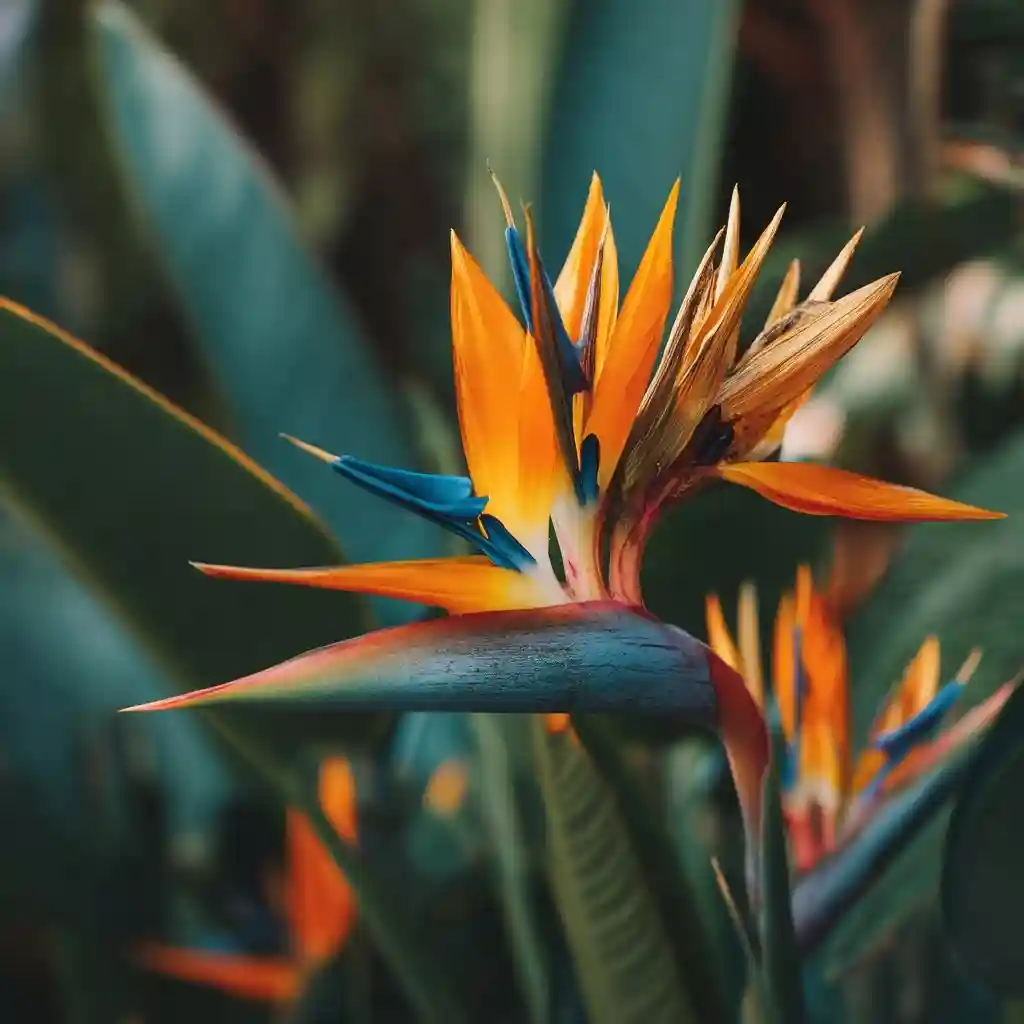
The tropical bird of paradise is one of the most dramatic Hawaiian tropical flowers, resembling a bird in mid-flight with its vivid orange and blue petals. Although native to South Africa, it thrives in Hawaii’s warm climate and is often used as an ornamental flower in both private gardens and resort landscapes.
This striking flower grows on tall, sturdy stems and blooms throughout the year in the islands. Gardeners appreciate its low maintenance, as it only needs moderate watering and plenty of sunlight to flourish.
The bird of paradise is often associated with joy and paradise itself, making it a favorite in floral arrangements and tropical landscapes. Its unique shape and bright colors make it a stunning highlight in any Hawaiian garden.
4. Pikake
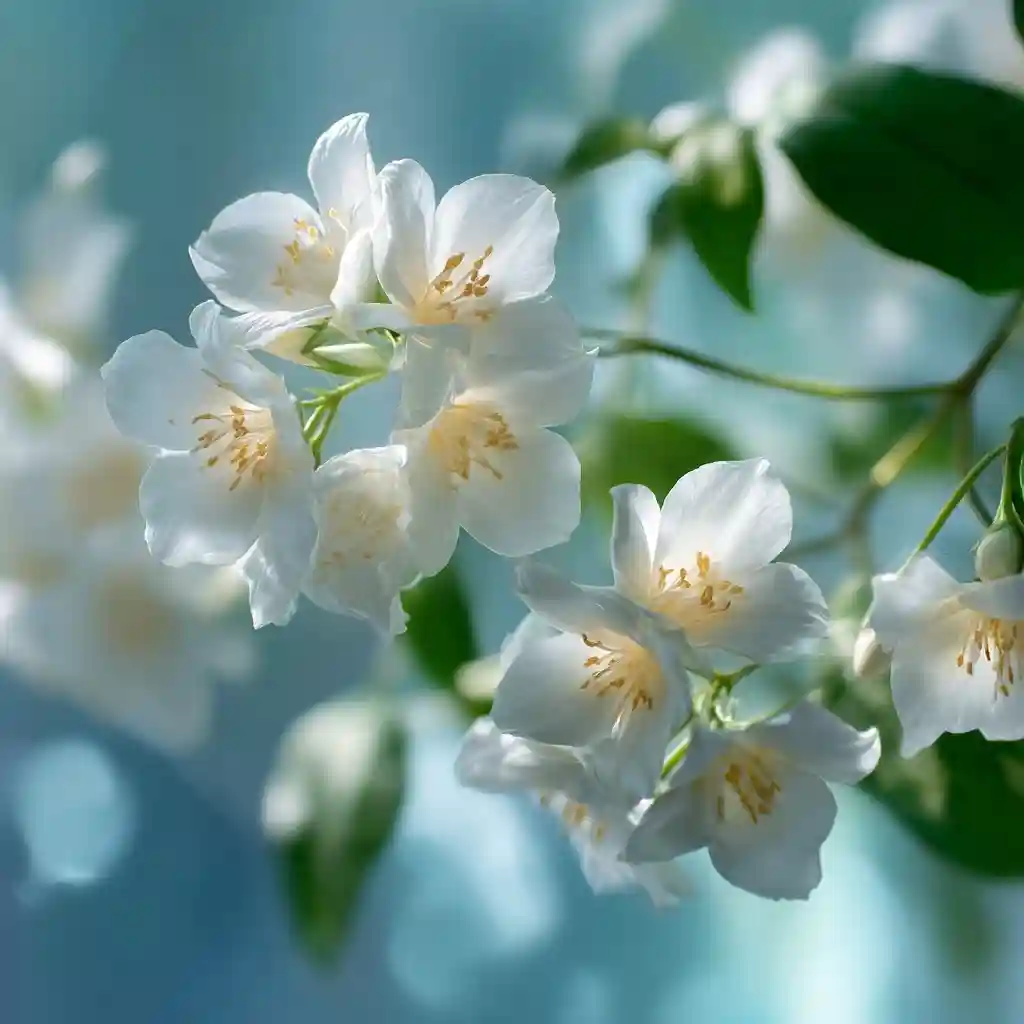
Pikake is a small, delicate jasmine flower with a fragrance that captures the essence of Hawaiian tropical flowers. Despite its modest size, its scent is enchanting and widely used in leis and perfumes. Pikake blossoms are typically creamy white and bloom in clusters, creating a soft, romantic aesthetic.
The flower gained its name from Princess Kaʻiulani, who adored peacocks—“pikake” in Hawaiian—and associated the bird’s elegance with the bloom’s beauty. Culturally, pikake leis are worn at weddings and special occasions to symbolize love, honor, and affection.
Pikake thrives in sunny to partially shaded areas with well-draining soil. Gardeners often plant it near windows or lanais to enjoy its sweet fragrance drifting through warm Hawaiian evenings.
5. Ohia Lehua
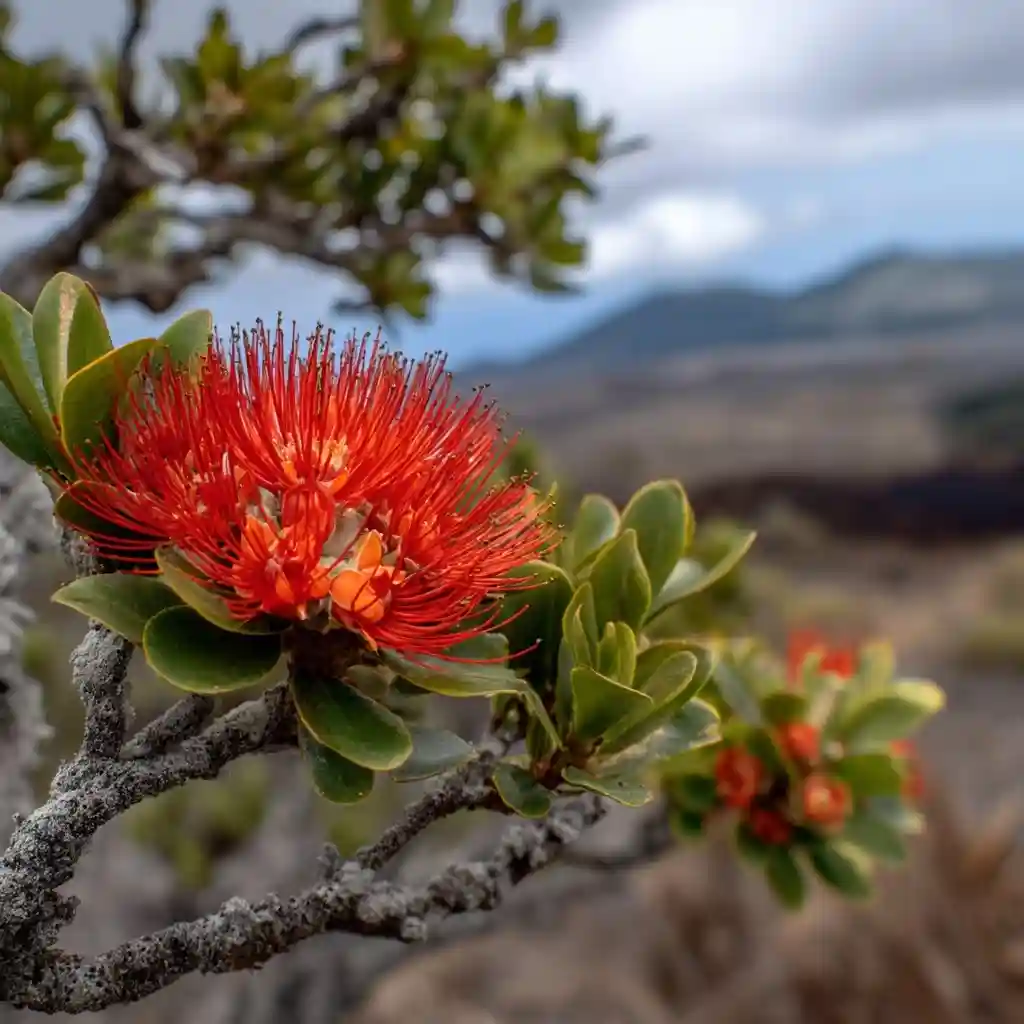
The ohia lehua is a fiery red blossom that grows on the ʻōhiʻa tree, a plant deeply rooted in Hawaiian culture and legend. This native bloom stands out among Hawaiian tropical flowers with its fluffy, brush-like petals, which can also appear in yellow or orange variations.
According to Hawaiian mythology, the lehua flower represents the love story of ʻŌhiʻa and Lehua, a tale of devotion and transformation. Locals believe that picking the lehua flower can bring rain, as it symbolizes the tears of separation in the legend.
The ʻōhiʻa tree thrives in volcanic soil and is often one of the first plants to grow after a lava flow, making it a powerful symbol of resilience and renewal in Hawaiian landscapes.
6. Naupaka
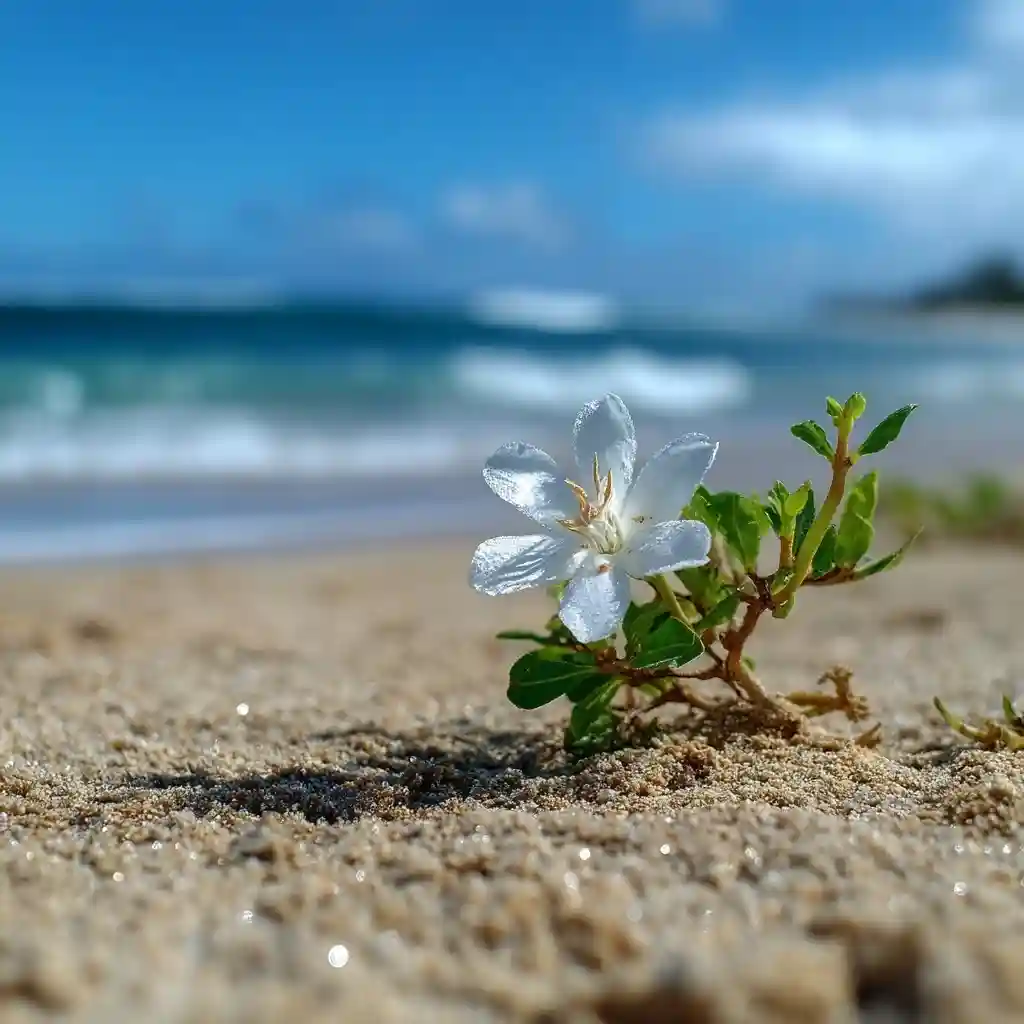
The naupaka is a unique coastal and mountain shrub known for its distinctive half-flowers, which look as if the bloom is missing the other half of its petals. This unusual shape sets it apart among Hawaiian tropical flowers, and it carries a romantic legend in Hawaiian culture.
The story tells of two lovers, separated by the gods, who were transformed into two different naupaka plants—one thriving in the mountains and the other by the sea. When placed together, the two half-flowers symbolize the lovers’ reunion.
Naupaka grows naturally along beaches and in upland areas, providing excellent erosion control and habitat for wildlife. Its small white or pale lavender blooms add subtle beauty to the islands’ diverse flora.
7. Heliconia
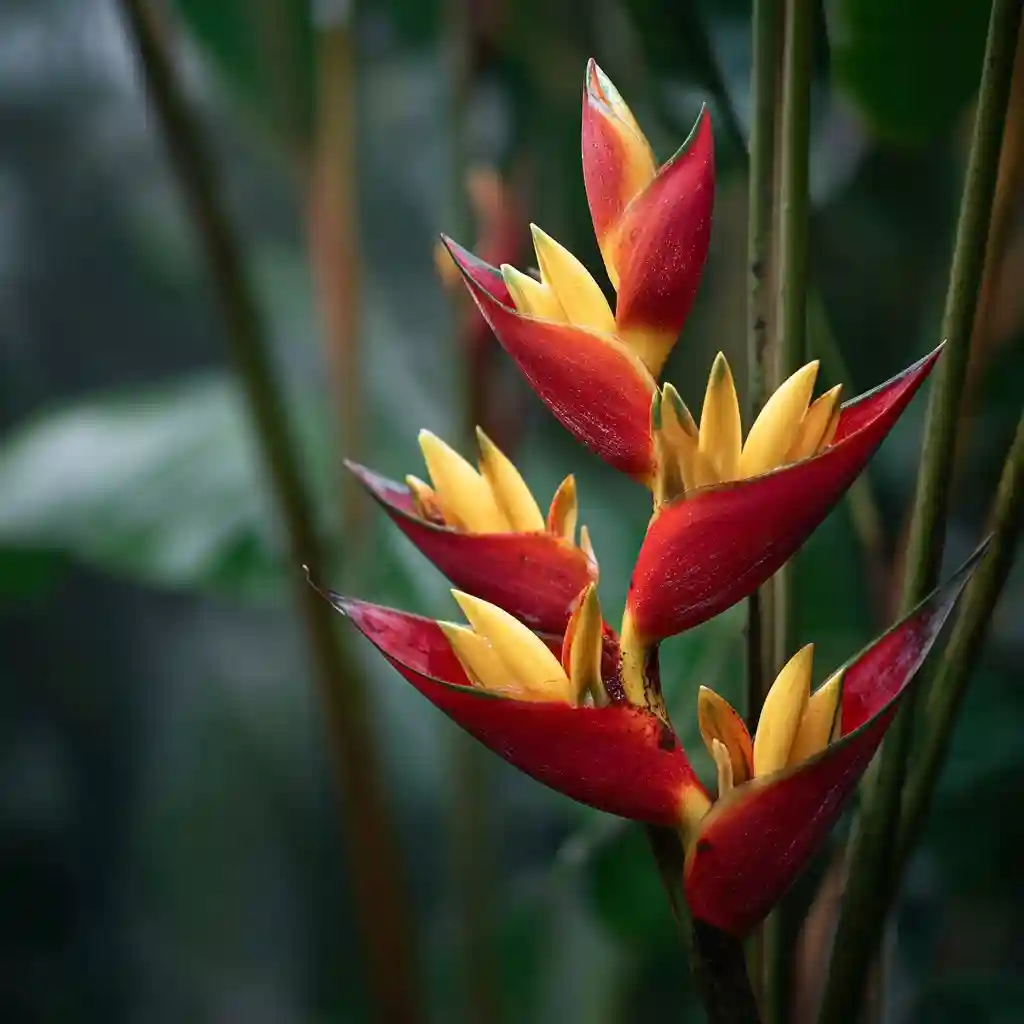
The heliconia is one of the most eye-catching Hawaiian tropical flowers, often called “lobster claw” due to its vibrant red, orange, or yellow bracts that resemble the shape of a claw. These dramatic flowers thrive in Hawaii’s warm and humid climate, adding a bold tropical flair to gardens and landscapes.
Heliconias are prized for their long-lasting blooms and ability to attract pollinators like hummingbirds. They can grow several feet tall, making them excellent for creating natural privacy screens or tropical backdrops in outdoor spaces.
Gardeners appreciate heliconias for their low maintenance—once planted in fertile, moist soil with plenty of sunlight, they bloom reliably and bring a touch of the exotic to Hawaiian gardens.
8. Hinahina
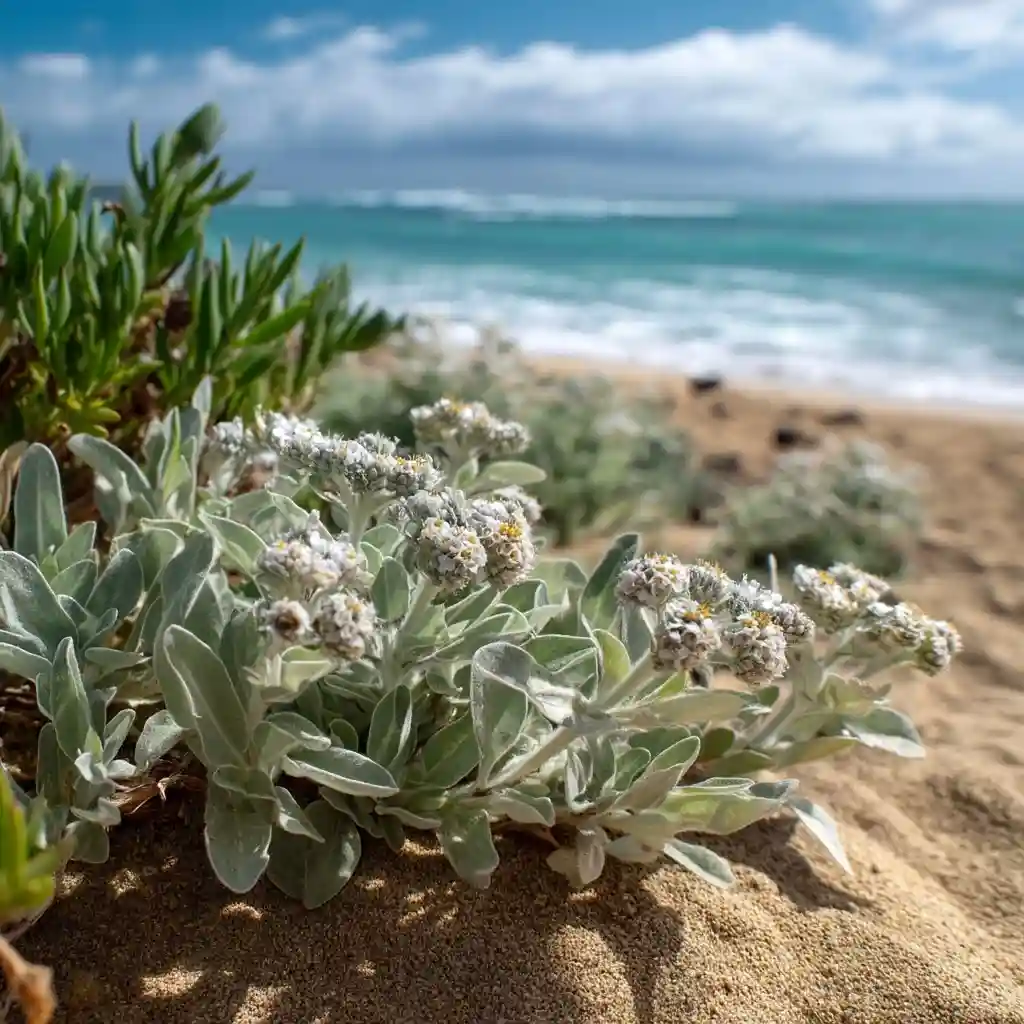
Hinahina, also known as ʻEnaʻena or silver sword groundcover, is a soft, silvery-gray plant that produces delicate, pale flowers. While less flashy than other Hawaiian tropical flowers, its beauty lies in its subtle color and its ability to thrive in harsh coastal conditions.
This native plant is often found clinging to rocky shorelines or sandy dunes, where its silvery leaves help reflect the sun and conserve moisture. Traditionally, hinahina has been used in Hawaiian lei-making, especially for weddings, symbolizing love and devotion.
Gardeners value hinahina for its drought tolerance and low maintenance, making it an excellent groundcover in xeriscapes or coastal gardens. Its soft texture and muted tones add balance to gardens filled with brightly colored tropical blooms.
9. Koʻoloaʻula
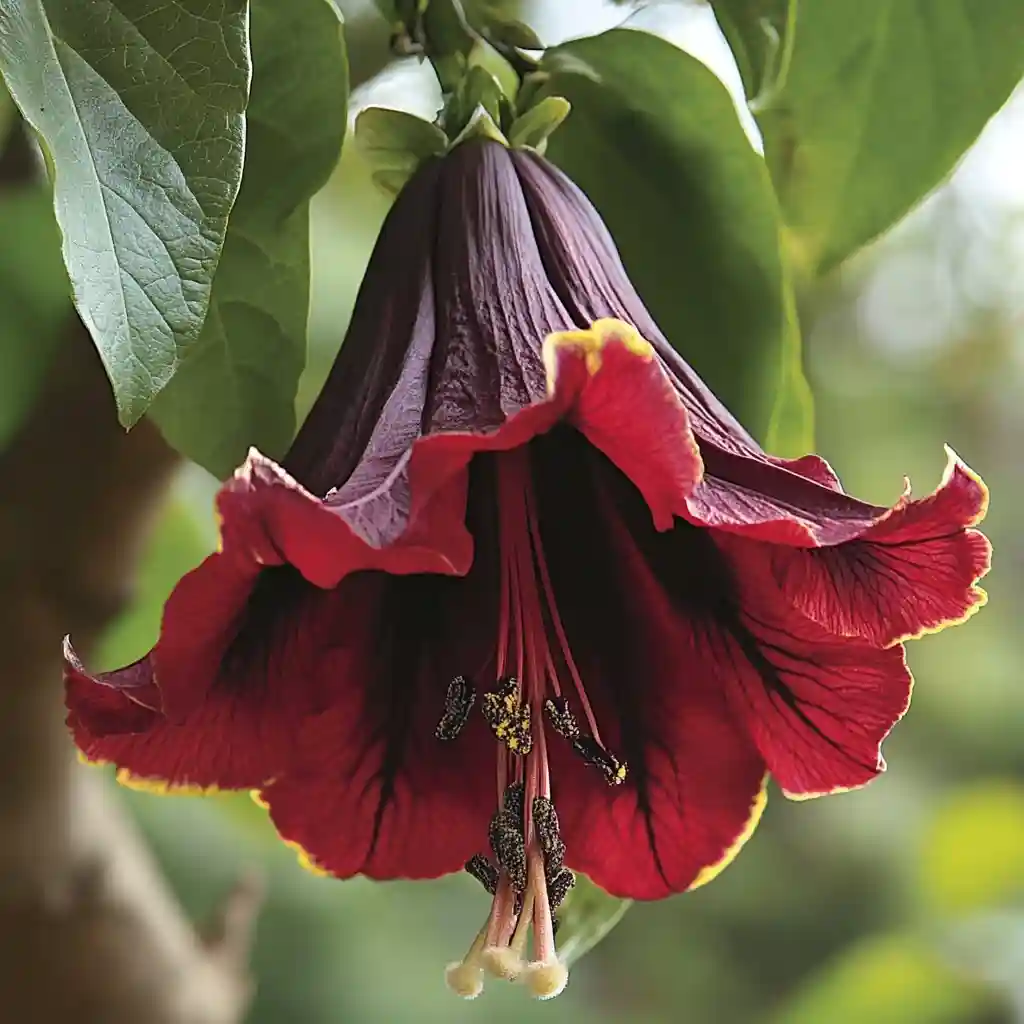
Koʻoloaʻula is a rare and beautiful hibiscus species native to Hawaii, cherished for its vibrant red to magenta blooms that resemble small hibiscus flowers. Among Hawaiian tropical flowers, this plant stands out not only for its striking color but also for its cultural and ecological importance.
Historically, koʻoloaʻula was used in lei-making and held significance in traditional Hawaiian ceremonies. Today, it is considered an endangered species, primarily found in dry, coastal, and lowland areas of the Hawaiian Islands.
Gardeners who cultivate koʻoloaʻula play a vital role in conservation. This plant thrives in sunny conditions with well-drained soil and can bring a splash of brilliant color to native plant gardens, all while supporting Hawaii’s biodiversity.
10. Anthurium
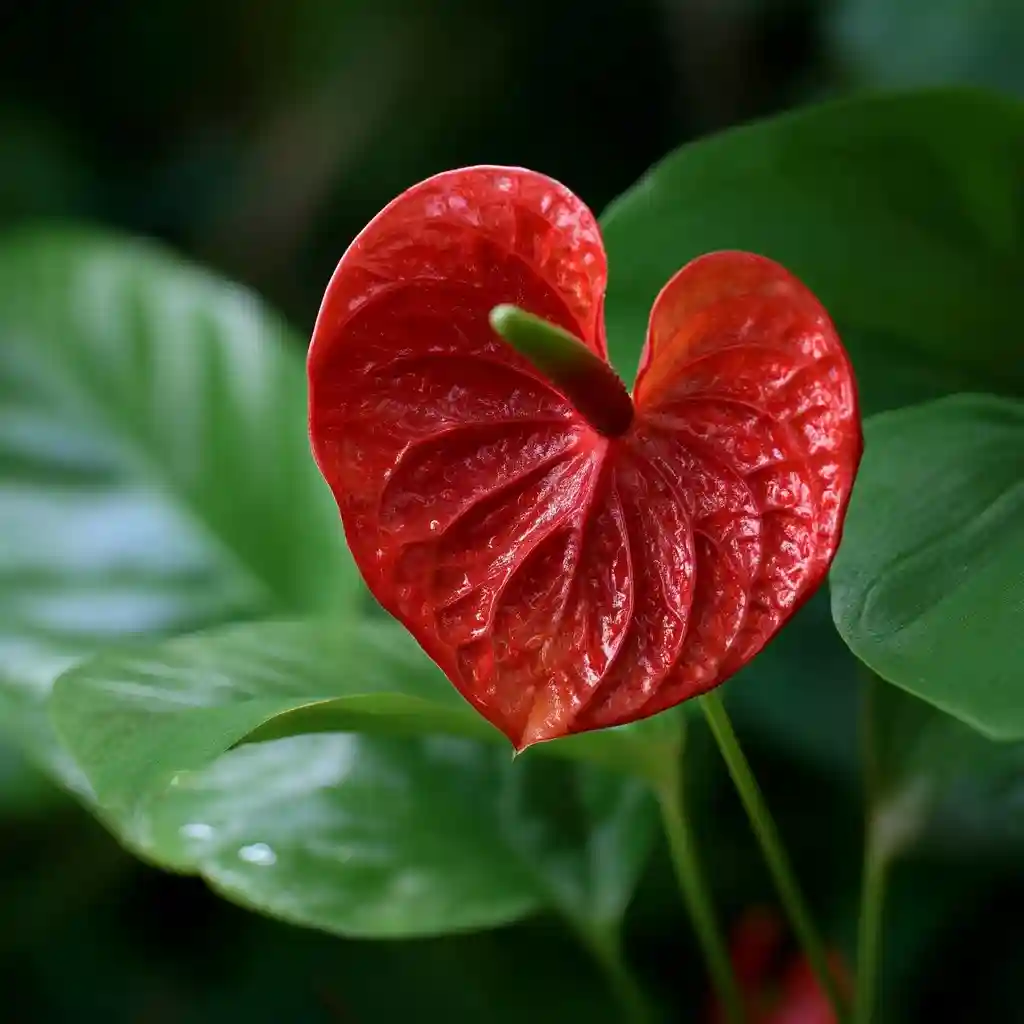
The anthurium is a glossy, heart-shaped bloom that has become an iconic feature of Hawaiian tropical flowers. Known for its striking red, pink, white, or green spathes and bright yellow spadix, the anthurium is often used in floral arrangements and hotel décor across the islands.
Originally native to Central and South America, the anthurium thrives in Hawaii’s warm, humid environment. It prefers partial shade and well-drained soil, making it a popular choice for both home gardens and commercial flower production.
Symbolically, the anthurium represents hospitality and abundance, which is why it’s frequently gifted to welcome guests or celebrate special occasions in Hawaii. Its long-lasting blooms can bring a pop of tropical color to any indoor or outdoor setting.
11. Hawaiian Gardenia (Nau or Nanu)
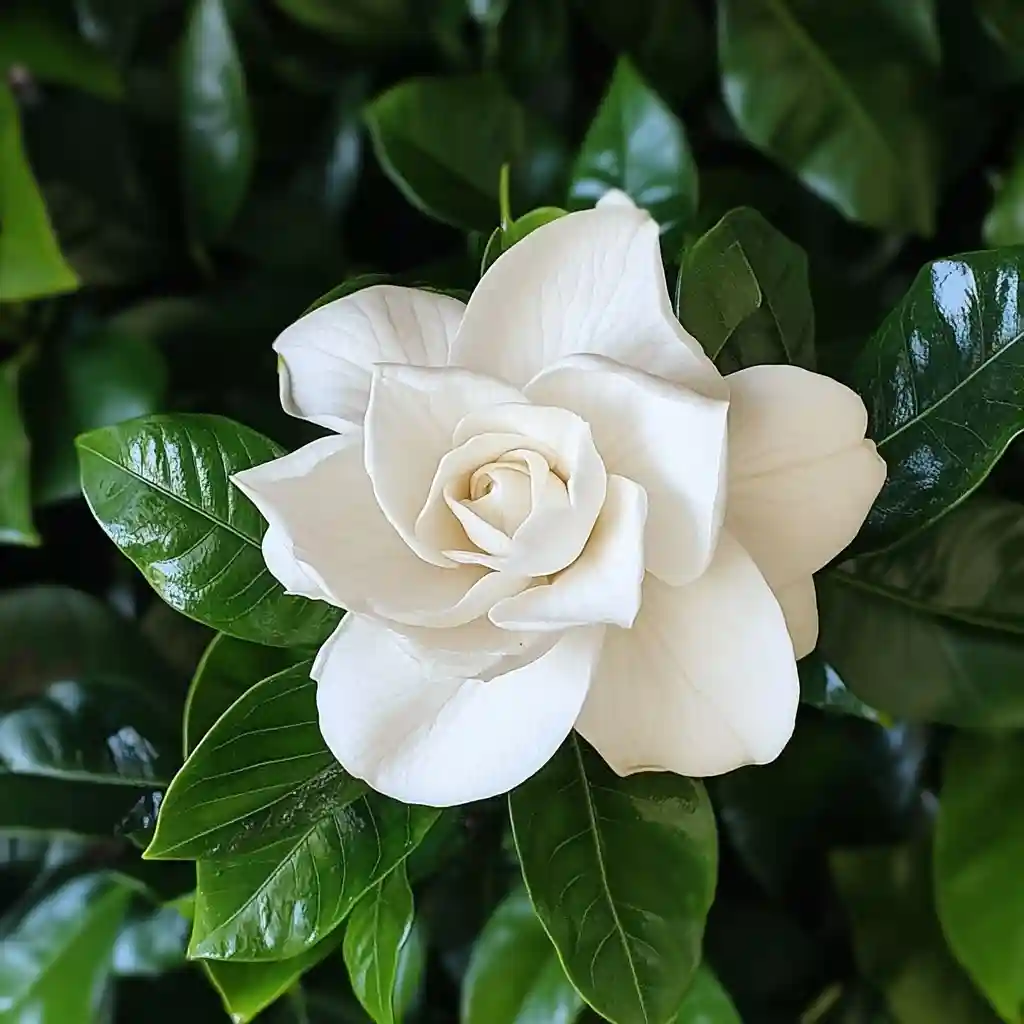
The Hawaiian gardenia, also called nau or nanu, is a fragrant white blossom that embodies the elegance of Hawaiian tropical flowers. Its creamy petals and rich scent make it a favorite for leis and traditional floral arrangements.
This native flower grows on small shrubs or trees and prefers sunny to partially shaded environments with well-draining soil. The blossoms are often pollinated by moths, which are drawn to their fragrance during the evening hours.
In Hawaiian culture, the nau has been cherished for its beauty and scent, often planted near homes and pathways to welcome visitors. Its gentle fragrance and delicate appearance make it a timeless favorite in Hawaiian gardens.
12. Hawaiian Lily (Uki Uki)
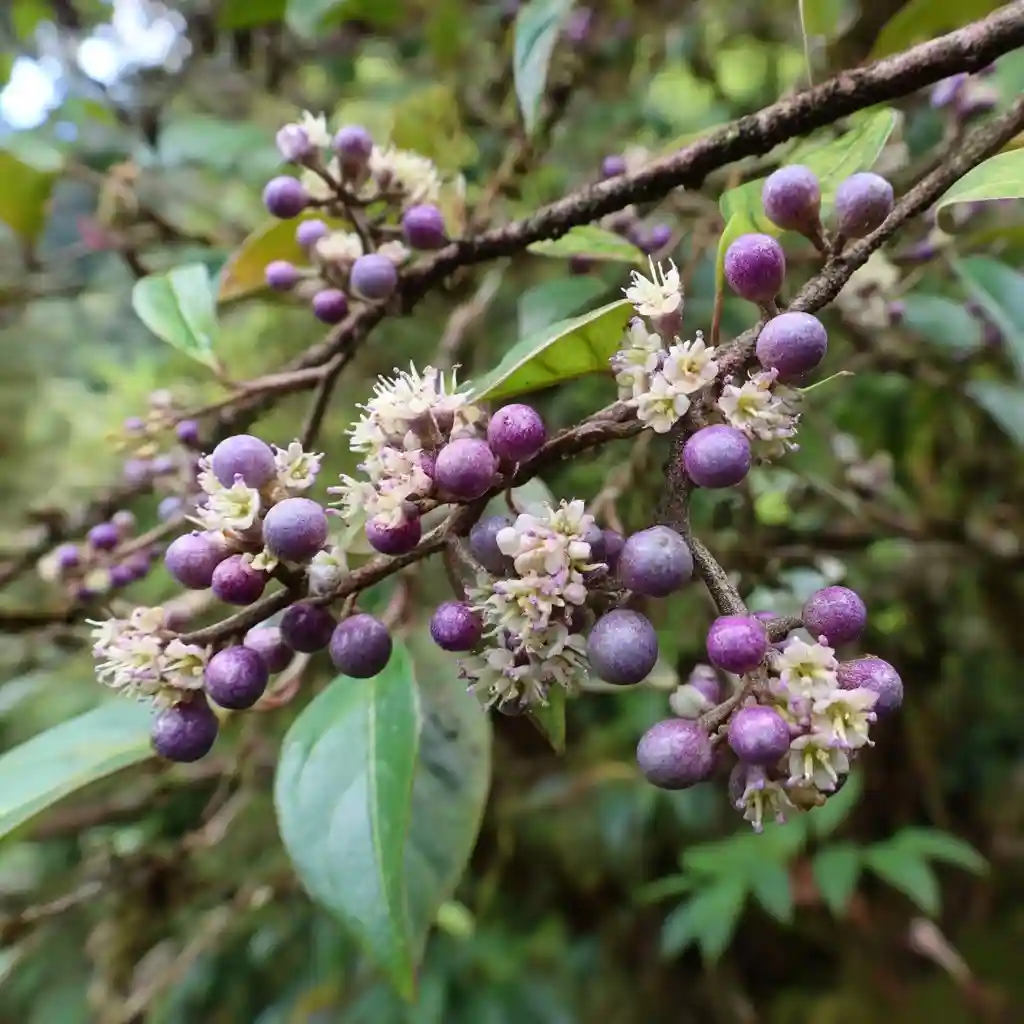
The Hawaiian lily, commonly called uki uki, is a graceful perennial plant that adds a subtle charm to the world of Hawaiian tropical flowers. It produces clusters of small, star-shaped purple or lavender blooms, followed by bright blue or purple berries that bring year-round visual interest.
Uki uki thrives in a variety of environments, from coastal areas to forests, making it a versatile addition to native Hawaiian gardens. Its low maintenance and ability to tolerate drought once established make it popular for natural landscapes.
Traditionally, the berries of the uki uki were sometimes used as a natural dye. Today, this hardy plant is admired for its ornamental appeal and its ability to support native Hawaiian ecosystems.
13. Hawaiian Poppy (Pua Kala)
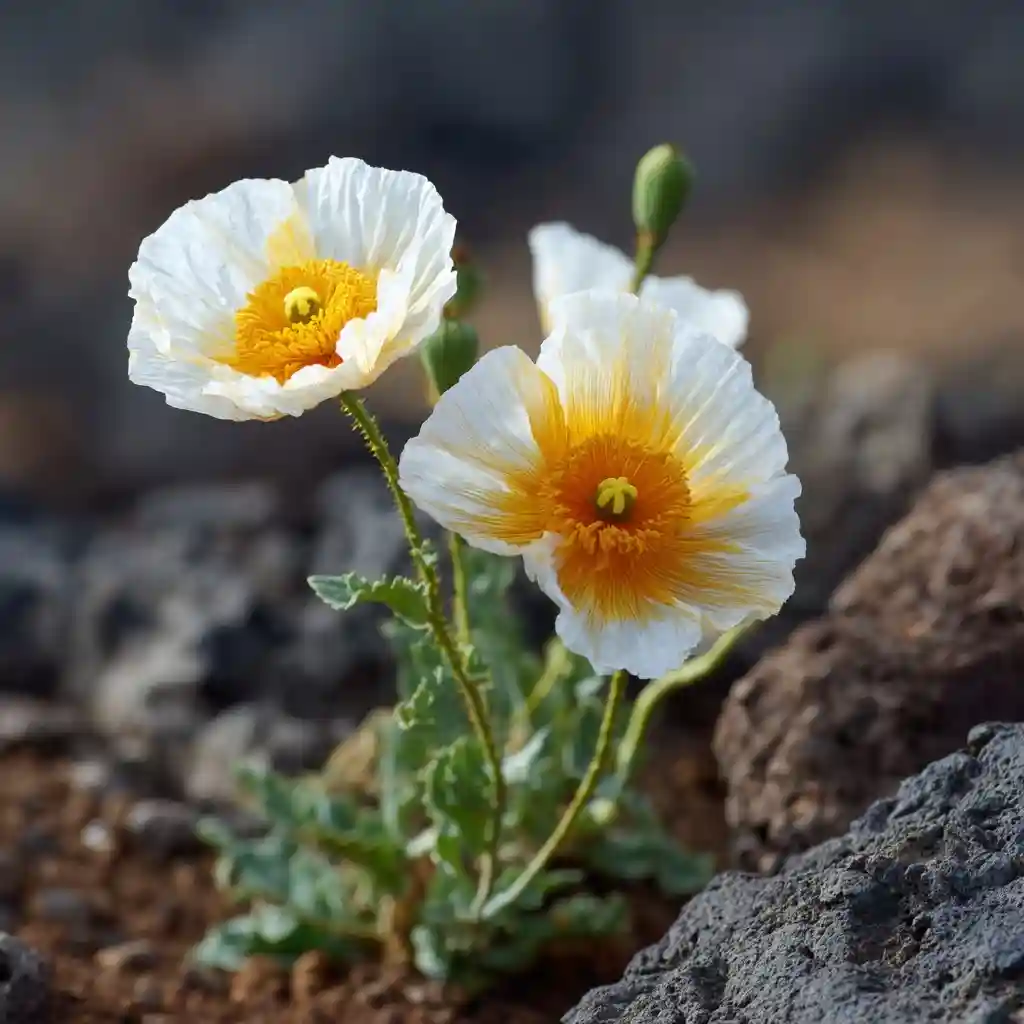
The Hawaiian poppy, or pua kala, is a striking wildflower that stands out among Hawaiian tropical flowers with its delicate white or pale yellow petals and bright yellow centers. This native bloom grows in dry, rocky areas, often thriving in volcanic landscapes where few other plants can survive.
Pua kala is known for its thorny stems and leaves, which protect it from grazing animals, while its roots help stabilize the soil in harsh environments. Its resilience makes it a symbol of strength and adaptability in Hawaiian culture.
Gardeners who cultivate Hawaiian poppies enjoy their low-maintenance nature and their ability to bring beauty to dry landscapes. However, gloves are recommended when handling this spiny plant.
14. Hawaiian Red Cranesbill
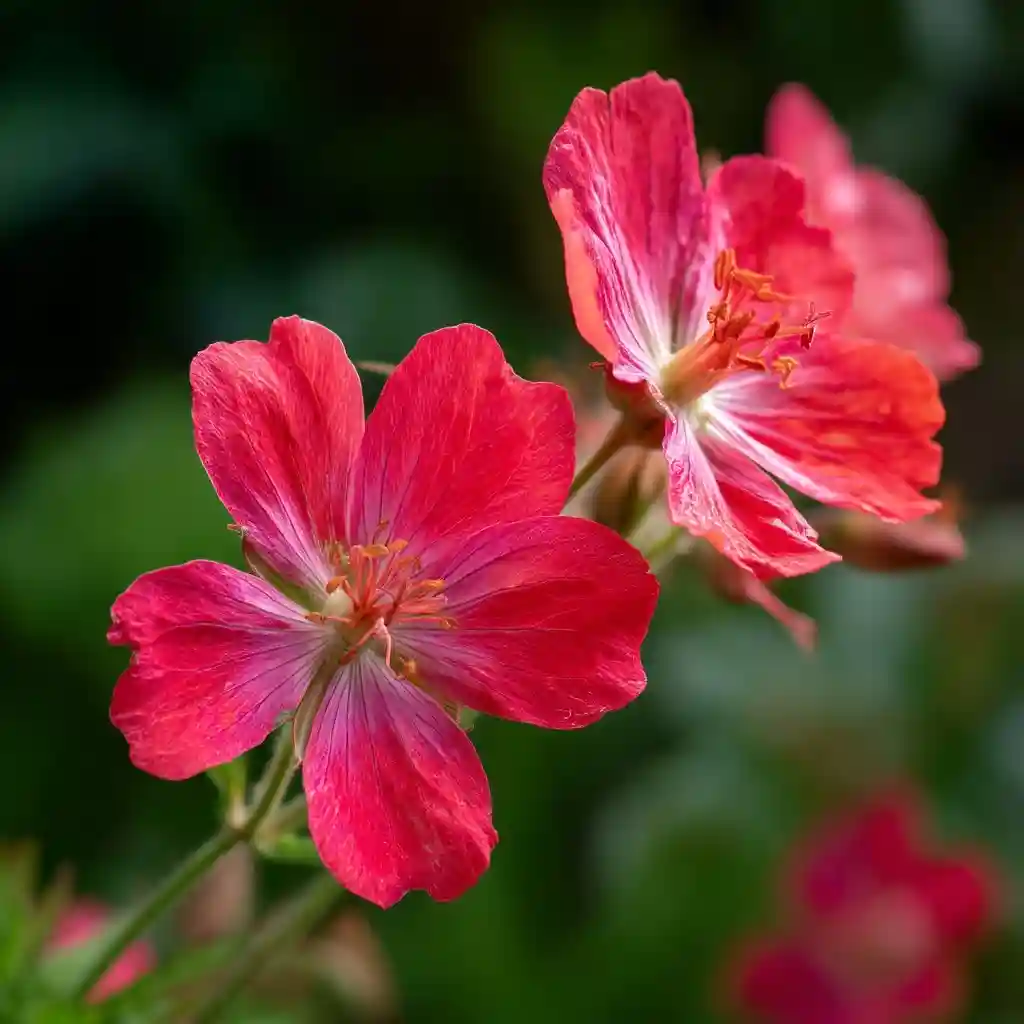
The Hawaiian red cranesbill is a delicate native geranium that adds a splash of color to the palette of Hawaiian tropical flowers. Its small, vibrant red or magenta blooms appear against soft green foliage, creating a charming contrast in gardens and natural landscapes.
This flower thrives in upland and mountainous regions, where it benefits from cooler temperatures and well-drained soil. While subtle compared to showier tropical flowers, the Hawaiian red cranesbill plays an essential role in supporting native pollinators and stabilizing local ecosystems.
Because of its rarity in the wild, growing cranesbill in a home garden contributes to the preservation of Hawaii’s native plant life, offering beauty while supporting conservation efforts.
15. Silver Geranium (Hinahina)
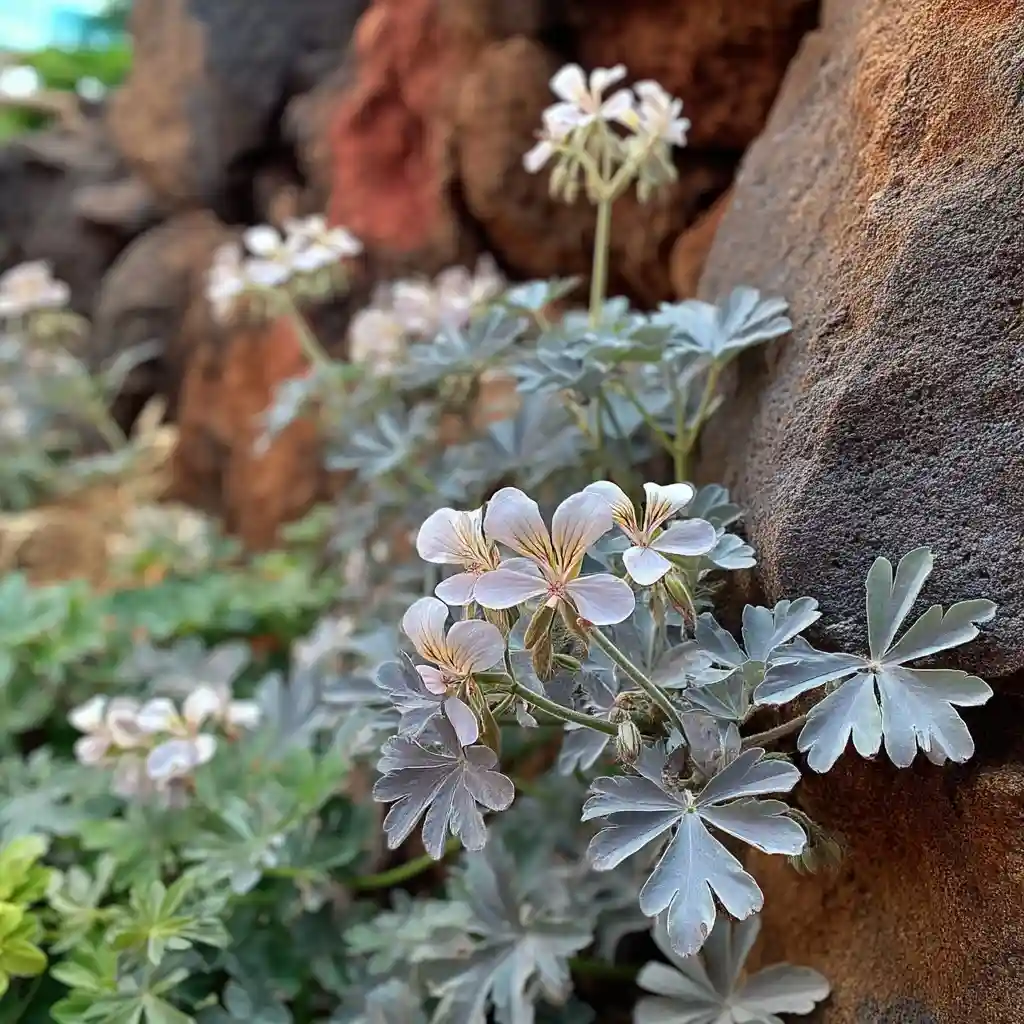
The silver geranium, also known as hinahina, is a rare and elegant native plant that rounds out the collection of Hawaiian tropical flowers. Its silvery foliage and tiny, delicate blossoms give it a soft, shimmering appearance, especially in sunlight.
This plant typically grows in dry, rocky coastal regions and is highly drought-tolerant, making it an important species for erosion control and native landscaping. In Hawaiian tradition, hinahina is often used in wedding leis, symbolizing fidelity and everlasting love.
Gardeners appreciate the silver geranium for its low-maintenance nature and unique color, which provides a soothing contrast to the bright reds, pinks, and yellows of other tropical blooms.
Conclusion
Hawaiian tropical flowers are more than just beautiful blooms—they tell stories of culture, history, and resilience. From the fragrant plumeria and elegant pikake to the symbolic ohia lehua and hardy pua kala, each flower contributes to the islands’ vibrant landscapes.
Whether you’re cultivating a tropical garden or simply appreciating the beauty of these native and introduced flowers, their presence brings a sense of aloha to any environment. Visiting Hawaii offers the perfect opportunity to witness these blossoms in their natural habitat, where their colors, fragrances, and legends come to life.
FAQs
1. What is the most famous Hawaiian tropical flower?
The hibiscus is the most iconic and is also the state flower of Hawaii.
2. Can I grow Hawaiian tropical flowers at home?
Yes, many can thrive in warm, sunny climates or as potted plants indoors with proper care.
3. Which Hawaiian flowers are used in leis?
Plumeria, pikake, orchids, and ti leaves are commonly used in lei-making.
4. Are all Hawaiian tropical flowers native to Hawaii?
No, some like plumeria and anthurium were introduced but have become culturally significant.
5. What flower symbolizes Hawaiian legends?
The ohia lehua is deeply tied to Hawaiian mythology and represents love and resilience.
🌿 Love gardening inspiration? Follow me on Pinterest for bold plant ideas, tips, and seasonal color!
More Posts
